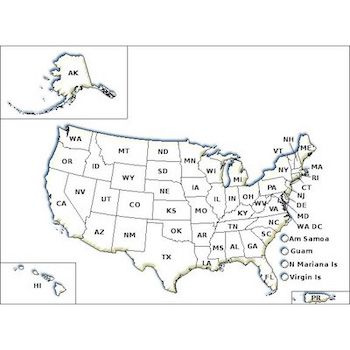Ticks cannot jump or fly, but often climb grasses and shrubs in order to come in contact with people or animals walking by so they can attach themselves and feed on blood.
Ticks have the potential to transmit diseases such as Lyme disease. Most tick-borne diseases require the tick to be attached and feeding for several hours before the person gets infected. Tick bites are often painless at first and most people do not know they have been bitten so checking yourself and your pet for ticks immediately after being in an infested area is important.
Numerous species of ticks exist in the United States and worldwide, but not all species of ticks transmit disease. If you need assistance identifying a tick, try contacting your local health department or county extension office for assistance.
Control tips:
- Check yourself, your children and your pets regularly and remove any ticks you may find.
- When outdoors try to avoid contact with tall grasses and shrubs that may be harboring ticks.
- Wear closed-toed shoes and light-colored clothing so you can see ticks on your clothing. Tuck pant legs into socks to prevent ticks from finding your ankles.
- Consider using a tick repellent on exposed skin and clothing according to label directions. Many insect repellents are also effective against ticks. EPA's webpage, Find the Repellent that is Right for You, can help you select one that will meet your needs.
- Reduce the ticks in your yard by keeping leaf litter, tall grasses, shrubs and bushes away from areas you use regularly.
- Keeping deer and rodents out of your yard can help to reduce the number of ticks.
- If further tick control around your home is necessary, you may also consider treating your yard with pesticides designed to control ticks. Always read and follow label directions.
- Pets can bring ticks into your home. Consider talking to your veterinarian about the options for controlling ticks on your pets.
If you have questions about this, or any pesticide-related topic, please call NPIC at 800-858-7378 (8:00am - 12:00pm PST), or email us at npic@oregonstate.edu.
Last updated July 18, 2025
Ticks
- Confirm their identity. Ticks have 6 or 8 legs, no waist, and they cannot jump or fly.
- Check yourself and your pet for ticks often, especially when leaving a
potentially infested area.
- Wear light colored clothing to make ticks easier to spot.
- Tuck pant legs into socks or shoes to keep ticks from finding bare skin. If you find a tick remove it immediately and correctly. Save the tick for later identification.
- Stay in the center of trails to avoid tall grass where ticks may hide.
- Run clothing in the dryer using high heat to kill ticks.
- Remove debris, trim shrubbery and keep vegetation low in your yard.
- Create a barrier of bark mulch or gravel between lawns and tree lines.
- Move children's play equipment away from tree lines and put down bark
mulch.
- Deter wildlife, including rodents, which can bring ticks into your
backyard.
- Insect repellents have been recommended, if needed. If applying to children consider these precautions.
If you choose to use a pesticide, read the label before you buy. Try a lower toxicity
product first.
If you have a pesticide product in mind, have your label handy and click here for information about that product.
These images are graciously allowed to be used by NPIC by Bugwood.org. Images included in the Bugwood Network Image Archives (ForestryImages.org, IPMImages.org, Invasive.org, and InsectImages.org) are made available under a Creative Commons license. Individual photographers retain all rights to images included in the archive.
Tick Bite Prevention
Controlling Ticks
Diseases Transmitted by Ticks
Biology of Ticks
Through its county agents, the Cooperative Extension Service gives individuals access to the resources at land-grant universities across the nation. These universities are centers for research in many subjects, including entomology (the study of insects) and agriculture. Each county within the United States has an Extension office, which is staffed with agents who work closely with university-based Extension specialists to deliver answers to your questions about gardening, agriculture, and pest control.



